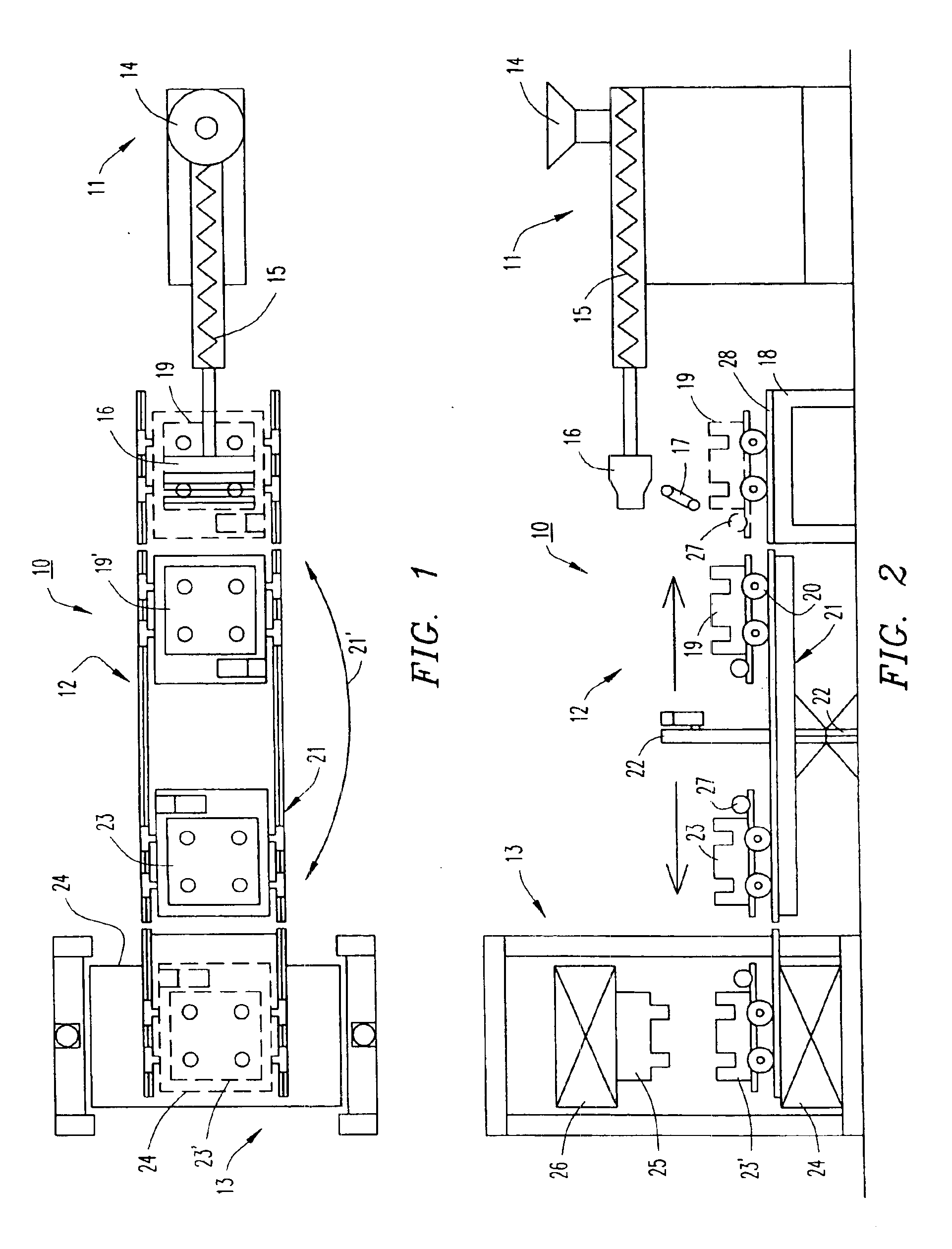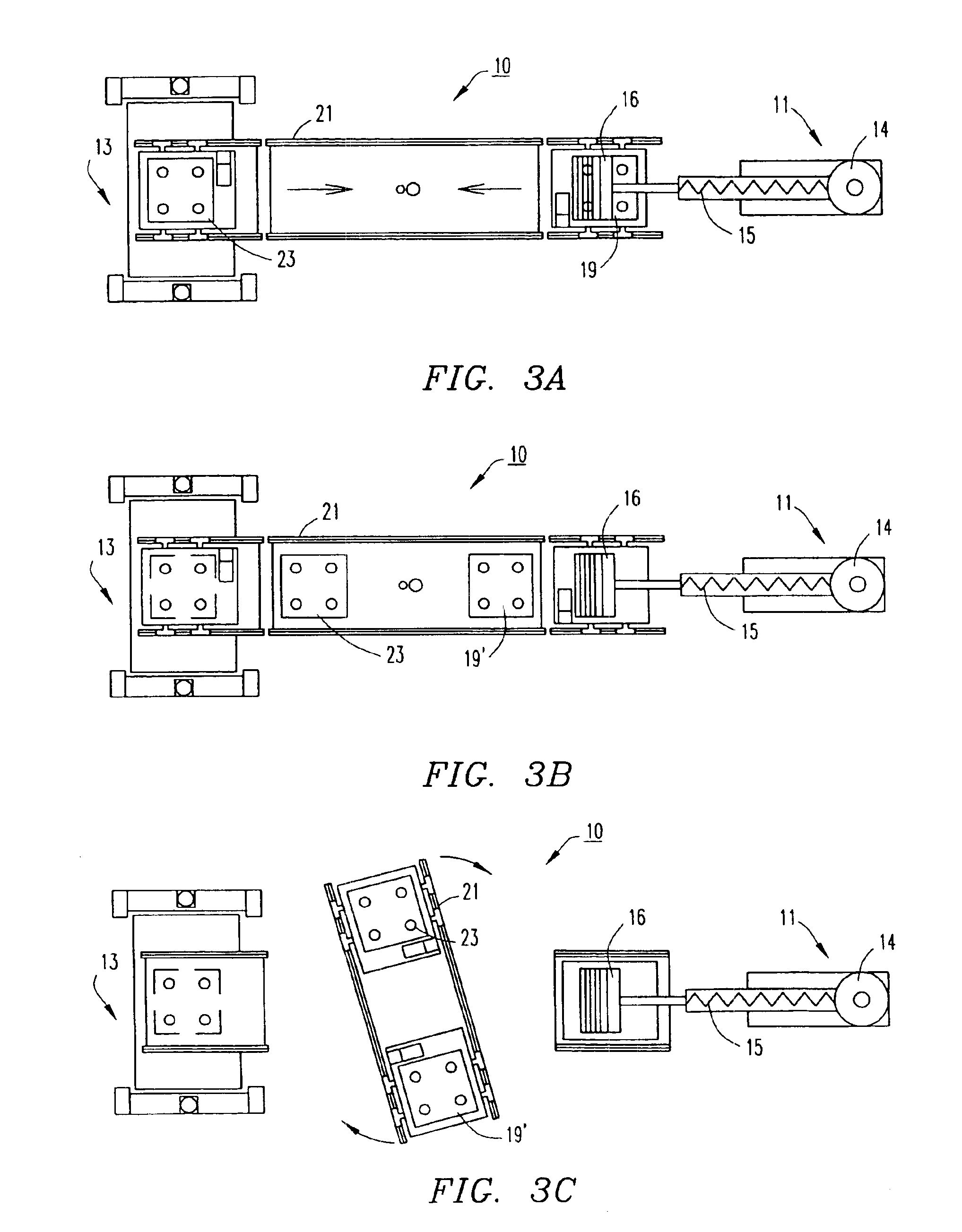Thermoplastic molding process and apparatus
a thermoplastic molding and thermoset technology, applied in the direction of turning machine accessories, drawing profiling tools, butter production, etc., can solve the problems of affecting the performance of parts, the inability to re-mold thermoset parts, and the weakness of concrete made with only sand and cement, etc., to facilitate the formation of thermoplastic composite structures and low fiber fracture rates
- Summary
- Abstract
- Description
- Claims
- Application Information
AI Technical Summary
Benefits of technology
Problems solved by technology
Method used
Image
Examples
Embodiment Construction
[0051]For many years, a gap has existed in the composites manufacturing industry that failed to provide a process to mass produce large thermoplastic composite structures or parts at the rates and labor efficiencies of compression or injection molding, with the accuracy and low pressures of autoclave molding. The principles of the present invention provide for processes that closes this gap and produces such thermoplastic composite parts. The processes are suitable for mid to high production volumes of parts, and may produce large parts and structures with high reinforcing fiber concentration and at low molding pressures.
[0052]Referring to FIGS. 1 and 2 of the drawings, a thermoforming apparatus 10 for thermoforming parts from a thermoplastic resin or from a thermoplastic composite is illustrated having an extruder 11, a mold exchange station 12, and a compression mold station 13. The extruder has a hopper 14 mounted on top for feeding a thermoplastic resin or composite material int...
PUM
| Property | Measurement | Unit |
|---|---|---|
| length | aaaaa | aaaaa |
| length | aaaaa | aaaaa |
| length | aaaaa | aaaaa |
Abstract
Description
Claims
Application Information
 Login to View More
Login to View More - R&D
- Intellectual Property
- Life Sciences
- Materials
- Tech Scout
- Unparalleled Data Quality
- Higher Quality Content
- 60% Fewer Hallucinations
Browse by: Latest US Patents, China's latest patents, Technical Efficacy Thesaurus, Application Domain, Technology Topic, Popular Technical Reports.
© 2025 PatSnap. All rights reserved.Legal|Privacy policy|Modern Slavery Act Transparency Statement|Sitemap|About US| Contact US: help@patsnap.com



